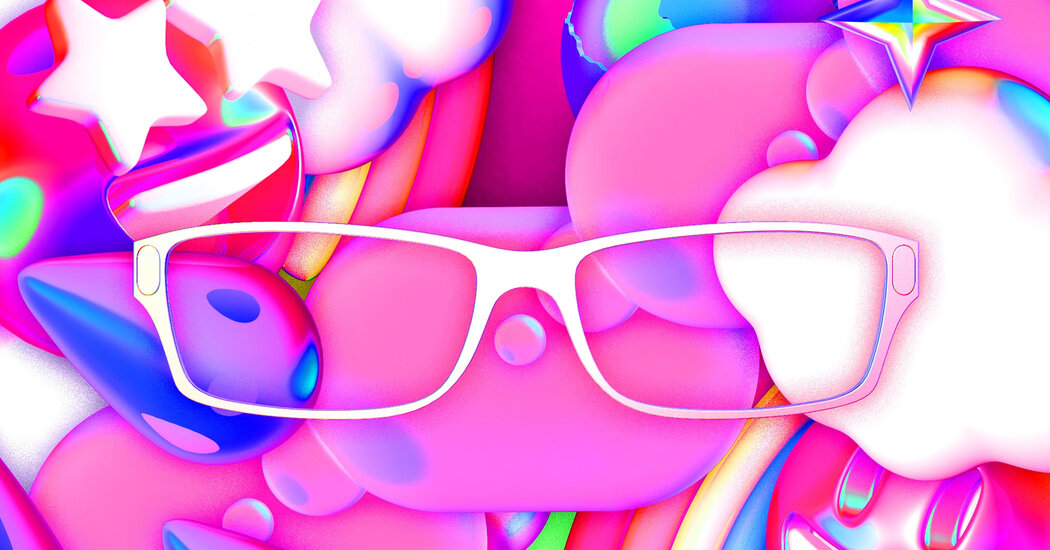In 2013, Apple CEO Tim Cook said gadgets we wear on our wrists “could be a deep area of technology.”
It was not. You may have a Fitbit or an Apple Watch, but that category of digital devices hasn’t been as important as Cook and many other tech optimists had hoped.
Half a decade ago, Pokémon Go persuaded people to roam their neighborhoods chasing animated characters that they could spot by pointing a smartphone camera at their surroundings. Cook was one of the company leaders who said the game could be the beginning of a transformative fusion of digital and real life, sometimes called augmented reality or AR.
“I think AR can be huge,” Cook told Apple investors in 2016.
It was not. Augmented reality, virtual reality and similar technologies remain promising and occasionally useful, but they haven’t been huge yet.
Today, Cook and a countless number of other people are betting that a combination of those two technologies will become the next major phase of the Internet. Apple, Meta, Microsoft and Snap are aiming for a future where we will wear computers on our heads for interactions that fuse physical and digital life. (You and Mark Zuckerberg can call this the metaverse. I don’t.)
Given the spotty track record of technologists predicting digital revolutions, it’s worth examining why their statements haven’t come true yet — and if they’re right this time around.
There are two ways to look at predictions of wearable computers and immersive digital worlds over the past decade. The first is that all the inventions of the past were necessary steps on the path to something great.
People mocked Google Glass after the company released a test version of the computer headset in 2013, but the glasses may have been a building block. Computer chips, software, cameras and microphones have since improved so much that digital headgear may soon be less obtrusive and more useful.
Likewise, Pokémon Go, virtual reality video games, and apps for viewing a new lipstick via augmented reality may not have been for everyone, but they helped techies refine the ideas and got some people excited about the possibilities of more engaging digital experiences. .
My colleagues have reported that Apple may release a ski goggle-like computer headset next year and aims to provide virtual and augmented reality experiences. Apple only hinted at that work at an event on Monday to unveil iPhone software tweaks, but the company has laid the groundwork for such technologies to become the potential next major product category.
The second possibility is that technologists may be mistaken again about the potential of the next iterations of Google Glass plus Pokémon Go. Perhaps more refined features, longer battery life, less boring glasses and more fun things to do on facial computers are not the most essential ingredients for the next big thing in technology.
One problem is that technologists have not yet given us good reasons why we would want to live in the digital-plus-real world they envision.
I’ve written before that any new technology inevitably competes with the smartphone, which is central to our digital lives. Anything that comes after that should answer the question: What does this thing my phone can’t do?
That challenge doesn’t mean technology is frozen where it is today. I’ve become excited about workouts that make it seem like a trainer is coaching me along a virtual mountain lake, and I can envision new ways to connect with people far away that feel more intimate than Zoom. Apple, in particular, has a track record of adopting existing technological concepts such as smartphones and music streaming and making them attractive to the masses.
But the richer our current digital lives have become, the harder it will be for us to embrace something new. That’s something those past and present predictions of a more immersive computing future haven’t really taken into account.
Before we go…
-
Just one of the cruel and formulaic hoaxes after violent tragedies: After mass shootings or other deadly events, online reports often claim that Jordie Jordan was one of the victims. My colleague Tiffany Hsu explains what is behind this repeated fake campaign and others like it.
-
Is this an excuse to get out of a bad deal? After a recent drop in the share prices of many tech companies, it now appears that Elon Musk is paying too much to buy Twitter. That’s helpful context for Musk’s attorneys’ complaint Monday that the company refused to give him data on automated Twitter accounts and for threatening (again) to pull out of the deal, my colleagues Lauren Hirsch and Mike Isaac reported. . (DealBook has more on this.)
-
Our shopping habits are changing the American workforce: Employment in transportation and warehousing — jobs such as truck drivers, Amazon warehouse workers and delivery couriers — has reached most of the workforce since records were kept, Axios reported. This is a decade-long shift in employment, fueled by our hunger to spend more on stuff than on services during the pandemic.
Related: “The jobs that are hot right now—restaurants, warehouses—are things that won’t last forever,” Mary C. Daly, president of the Federal Reserve Bank of San Francisco, told my colleague Jeanna Smialek.
Hug for this
David Scott uses computers to create Rube Goldberg-like creations, including this concert of marbles on xylophone-like beams. (My colleague Maya Salam recommended the videos of Scott, who goes by the name Enbiggen on social media.)
We want to hear from you. Tell us what you think of this newsletter and what else you want us to discover. You can reach us at ontech@CBNewz.
If you have not yet received this newsletter in your inbox, then sign up here† You can also read previous On Tech columns†

